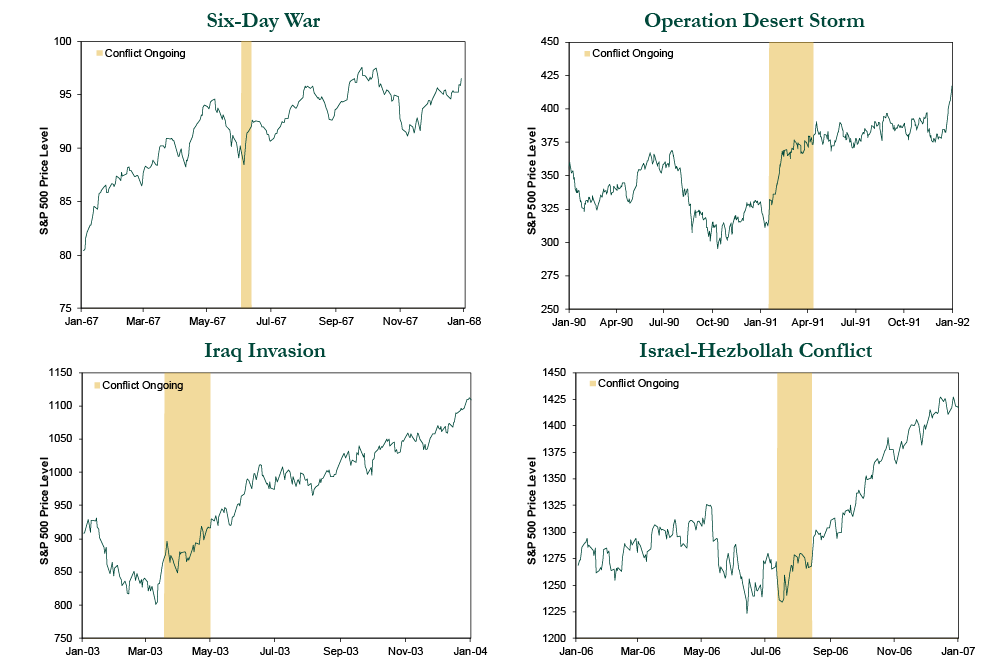Personal Wealth Management / Market Volatility
Bear Market Indicators
“There’s simply no single answer to the question: What causes a bear market? … There is no fundamental indicator on its own, no technical indicator on its own, no single silver bullet, no nothing on its own perfectly predicting when a bear market will start.”
-Ken Fisher, The Only Three Questions That Count.
We believe that, with thorough research and analysis, impending bear markets can be identified and some of the bear market decline can be avoided. Bear in mind, though, no one has consistently and correctly called every bear market in advance. This includes us—although we have helped counsel thousands of investors through good times and bad.
Following are some indicators, or signs, we monitor that characterize negative fundamentals, euphoric investor sentiment and potential big negatives. But remember: No one indicator alone is perfectly predictive of bear markets.
Negative Fundamentals
|
Indicator |
Description |
|
Weak Corporate Earnings |
Are stock market earnings degrading or falling for multiple successive quarters? |
|
Inverted Yield Curve |
Are overnight interest rates higher than long-term, 10-year bond yield rates? |
|
Faltering Revenue Growth |
Earnings can be affected by outside factors; sales, less so. |
|
High Inventories, Low Demand |
Are business inventories piling up, while consumer demand seems to be tailing off ? |
|
Trend, Not Data Point |
One data point isn’t sufficient evidence. The trend should recur for multiple readings and in multiple nations. |
Euphoric Sentiment
|
Indicator |
Description |
|
High LBO Activity |
Are businesses taking on debt to buy competitors (leveraged buyouts)? |
|
Overpriced IPOs |
Are extremely low-quality IPOs flying off the shelves at sky-high valuations? Are companies going public solely for the sake of going public? |
|
Rising Corporate Debt |
Are businesses taking on more debt, despite slowing or downward trending sales and earnings? |
|
Uniformly Bullish Media |
Is the media consistently showing optimism—and are those who were already optimistic now euphoric? |
|
“It’s Different This Time” |
Is there widespread discussion of how “It’s different this time”? |
|
Euphoria |
Is everyone talking about stocks? Watching CNBC instead of the World Series or the Super Bowl? Are investors flooding into equity mutual funds? Is your taxi driver giving you stock tips? |
A Wallop—Big Enough to Shave Several Trillion off Global Economic GDP
|
Indicator |
Description |
|
Escalating Tariffs / Trade Wars |
Are countries around the world constructing extreme barriers to trade? |
|
Monetary Policy Errors |
Has a major central bank made a severe policy error? |
|
Regulatory Changes |
Have there been massive changes in regulations or accounting rules that may adversely impact businesses? |
|
Major Geopolitical Conflict |
Is a major, global conflict likely to erupt? |
|
Other Unknown Negative |
Is there something else that can knock several trillion dollars off global economic GDP? |
A common misconception is that regional geopolitical conflicts are likely to cause bear markets. Note that, per the table above, a geopolitical conflict must be major and global in nature to end a bull market. Smaller, regional conflicts typically aren’t powerful enough. For instance, the current bull market has already surmounted fears surrounding the Israel-Hamas conflict, Russian-Ukrainian crisis and North Korean missile tests—those fears have simply become bricks in the “Wall of Worry” this bull has climbed. Even when global powers escalate a local war, it doesn’t usually derail a bull as long as the conflict remains geographically confined. Exhibit 1 shows market movements around several regional conflicts that similarly went the way of the “Wall of Worry.”
Exhibit 1: Regional Conflicts Don’t Knock Stocks
Source: FactSet, as of 8/14/2014. S&P 500 Price Index Level from 1/1/1967 – 1/1/2007.
Although stocks may fluctuate on uncertainty as a conflict begins, once the conflict is actually underway, the market typically digests and moves beyond it. Localized conflicts don’t have the power or far-reaching economic impact to derail a global bull market. Thus, geopolitical conflicts rarely have a lasting impact on market direction. The one exception is the onset of World War II, which Walloped the ongoing bull market in 1937 when it became clear it was escalating into a global war. Still, stocks bottomed in 1942, a full three years before the end of World War II. Stocks can and do rise during periods of even significant armed conflict. A major, unexpected conflict inflicting global damage would be big enough to be a Wallop.
Exiting the stock market is one of the biggest investment risks you can make. If you are wrong and the market continues to climb, you have missed out on returns that are important for a long-term stock investor’s objectives. Deciding to sell or go defensive needs to be tactical and shouldn’t be based on gut feelings. Watching for these market signals can help you remain impartial and help you identify if a bear is ahead so you can make decisions accordingly.

Where Might the Market Go Next?
Confidently tackle the market’s ups and downs with independent research and analysis that tells you where we think stocks are headed—and why.





